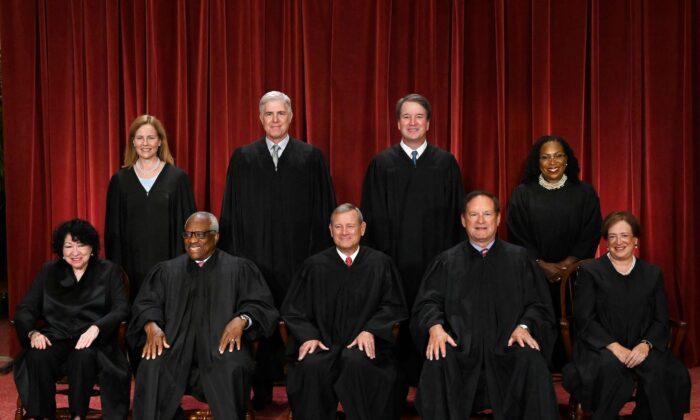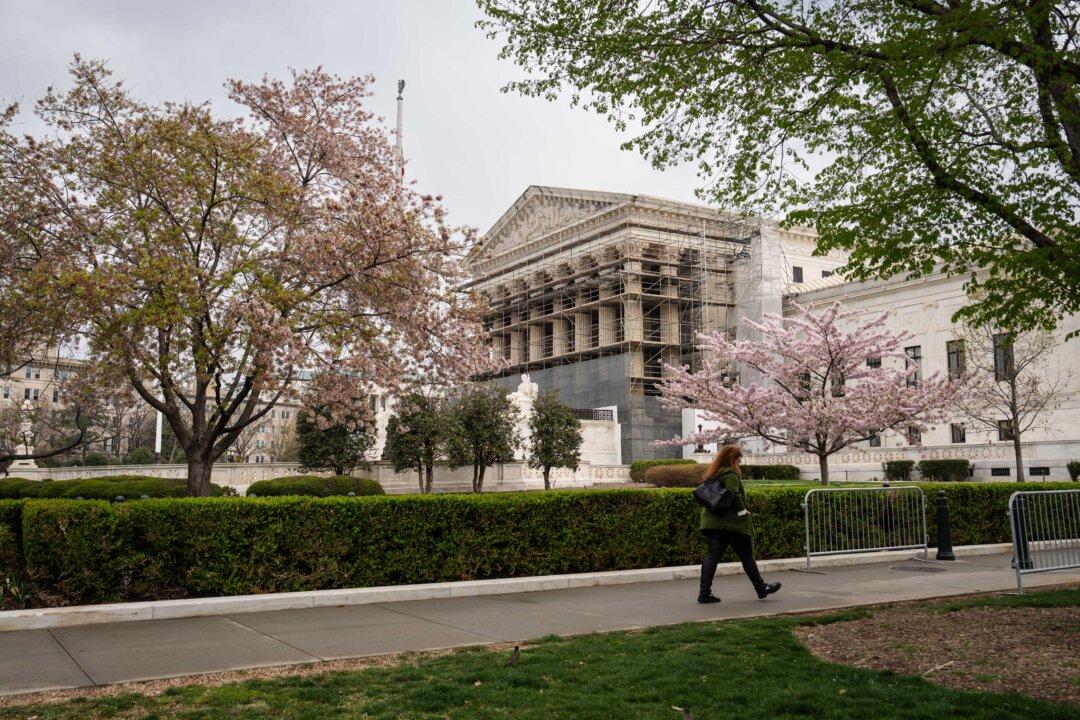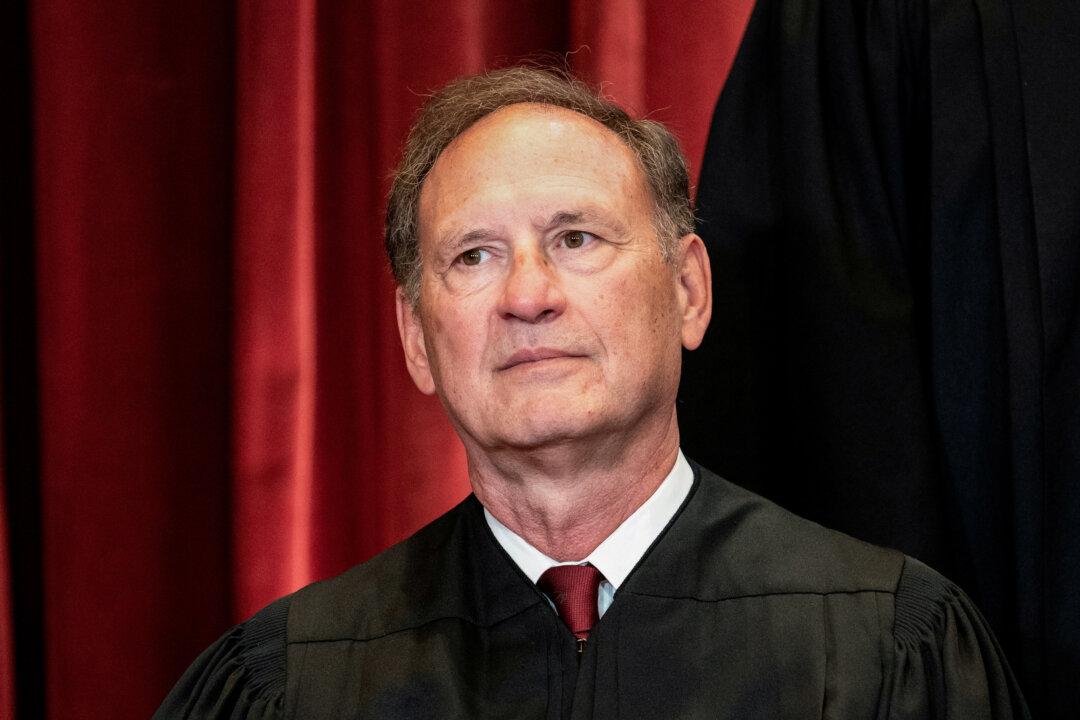The Supreme Court may be ideologically conservative at the moment but contrary to what critics claim, it does not do the bidding of the Republican Party, panelists heard July 13 during a discussion between legal experts and legal journalists at the Heritage Foundation, a conservative think tank in the nation’s capital.
The proposed Supreme Court Ethics, Recusal, and Transparency Act (SCERT) of 2023 (S.359), introduced by Sen. Sheldon Whitehouse (D-R.I.), would direct the Supreme Court to issue a code of conduct governing its own members. The bill, which is opposed by Republicans, would also create a system allowing members of the public to file complaints against justices for violating the code of conduct or for engaging “in conduct that undermines the integrity of the Supreme Court of the United States.”
The panel, which was moderated by GianCarlo Canaparo, senior legal fellow at Heritage’s Edwin Meese III Center, comprised Jennifer Mascott, assistant law professor and co-executive director of the C. Boyden Gray Center at Antonin Scalia Law School; attorney Kannon Shanmugam of Paul, Weiss; Robert Barnes, reporter at The Washington Post; and Jess Bravin, reporter at The Wall Street Journal.
Contrary to the expectations of many, on June 8, the court voted 5–4 to strike down Alabama’s electoral map, finding the map drawn by Republican state lawmakers was racially discriminatory and, therefore, a violation of the federal Voting Rights Act (VRA).
In Allen v. Milligan, the GOP-dominated state asked the court to weaken Section 2 of the VRA, which forbids voting procedures that discriminate on the basis of race, color, or membership in a large language minority group. But the court declined to do so, much to the relief of Democrats and left-wing activists.
And in Moore v. Harper, the court ruled 6–3 against North Carolina Republicans who argued that state legislatures have sweeping authority to make the rules for federal elections in the states without interference from the courts. Three conservative-leaning justices were in the majority; the other three dissented.
On June 27, the Supreme Court rejected the independent state legislature doctrine, under which Republicans say that the Constitution has always directly authorized state legislatures alone to make rules for conducting federal elections in their respective states. Democrats say it is a fringe conservative legal theory that could endanger voting rights, enable partisan gerrymandering in the redistricting process, and cause upheaval in election administration.
Mr. Barnes said if the court had gone the other way in the case, it “would have been a huge change in election law–that state legislatures have almost unlimited power to decide the rules of federal elections and draw congressional maps even if they’re extremely partisan without any interference from state courts.”
Although the court rejected the doctrine, Chief Justice John Roberts added a caveat saying state courts do not have free rein and cannot “transgress ordinary bounds of judicial review,” but did not explain what he meant, Mr. Barnes said.
“They’ll know it when they see it,” he added.
Mr. Shanmugam said Allen v. Milligan was an interesting case because it–along with Moore v. Harper—“defies the narrative that the conservative side of the court achieves ‘conservative results’ in every single case.”
Lawyers and pundits see the two cases differently, Mr. Shanmugam said.
“There is an interesting debate about how significant this is between those who actually litigate the cases and those who want to characterize the court as moving in a particular direction.”
Mr. Bravin said “one of the broad takeaways” from Allen v. Milligan and Moore v. Harper, is that “this is a very conservative court, but you can’t say it is a partisan Republican court that acts uniformly in the immediate political interests of the Republican Party.”
“Whatever nuances or reservations there might be for those two decisions, the immediate effect of both of those cases is to deny an electoral advantage that the Republican Party was seeking for the 2024 election,” Mr. Bravin said.
“So it certainly doesn’t take away from the court’s overall trajectory to the right, but it does, I think, belie arguments that it is purely an arm of the Republican Party.”
Mr. Shanmugam said the six Republican appointees on the court “are much less monolithic in their jurisprudential approach than the three Democratic appointees … [who] voted together [in] something like 88 percent of the court’s cases.”
“The number was much lower for the Republican appointees, and I think that that reflects the fact there are some meaningful jurisprudential differences.”
The court is “moving more incrementally than critics of the court would have one believe.”
Few observers were surprised when the court struck down President Joe Biden’s student loan forgiveness program on June 30.
The court held 6–3, with all six conservative-leaning justices voting to invalidate the program and all three liberal-leaning justices voting to uphold it.
Biden unveiled the plan in a move that critics decried as a constitutionally dubious attempt to help Democrats in the November 2022 congressional elections.
In Biden v. Nebraska, Mr. Roberts, a member of the court’s conservative bloc, wrote that the government overreached when it invoked the Higher Education Relief Opportunities for Students Act of 2003 (HEROES Act) to grant debt relief en masse.
The government “‘modified’ the cited provisions [in the statute] only in the same sense that the French Revolution ‘modified’ the status of the French nobility—it has abolished them and supplanted them with a new regime entirely,” Mr. Roberts wrote.
Mr. Bravin said it was interesting that the chief justice expressed “a broader concern about the way that administrative agencies have been acting.”
It seemed Mr. Roberts was signaling a “philosophical or broader jurisprudential view about the bounds of the executive’s autonomy to apply statutes.”
The chief justice “didn’t leave it at just student loans,” Mr. Bravin said, adding that Mr. Roberts said there was a pattern here.
“Who was he talking to when he brings in those broader concerns that are not directly related to statutory interpretation of this student loan relief plan?”
Mr. Shanmugam said, “I think the chief justice was speaking to the lower courts.”
“We’ve now had two opinions in two years that have relied expressly on this major questions doctrine,” he said.
Under the relatively new major questions doctrine, when interpreting statutes, courts will presume that Congress is not delegating issues of major economic or political significance to executive agencies such as the Department of Education unless it says so. Conservatives favor the doctrine as a way of reining in the administrative state and an executive branch that, in their view, has too much power.
“And perhaps not coincidentally, that’s occurring at a time when we have an administration that is in the process of deciding some enormously consequential issues through rulemaking,” the attorney said.
“And those rules are inevitably going to be challenged–spoiler alert—in part based on the major questions doctrine, and lower courts in short order are going to have to grapple with those arguments.”
The student debt opinion’s reliance on the major questions doctrine “was intended to put a little bit more by way of meat on the bones on this doctrine,” Mr. Shanmugam said.
On June 30, the court ruled 6–3 in favor of a Christian website designer who said that Colorado’s law requiring her to create websites to celebrate same-sex weddings infringed on her constitutional rights.
Justice Neil Gorsuch wrote in 303 Creative LLC v. Elenis that Colorado may not force “an individual to speak in ways that align with its views but defy her conscience about a matter of major significance.”
Ms. Sotomayor dissented, writing, “Today, the Court, for the first time in its history, grants a business open to the public a constitutional right to refuse to serve members of a protected class.”
The case pitted “the interests in free speech, First Amendment-protected interests, against the interests of LGBTQ individuals,” Mr. Shanmugam said.
But the court skirted the issue of the free exercise of religion when “it took pains to grant review only on the question of free speech,” he said.
“And that struck the issue of religion out of the equation,” leaving for another day the question of whether the court may at some point “provide some more or perhaps even greater protections” for free exercise, the lawyer said.





